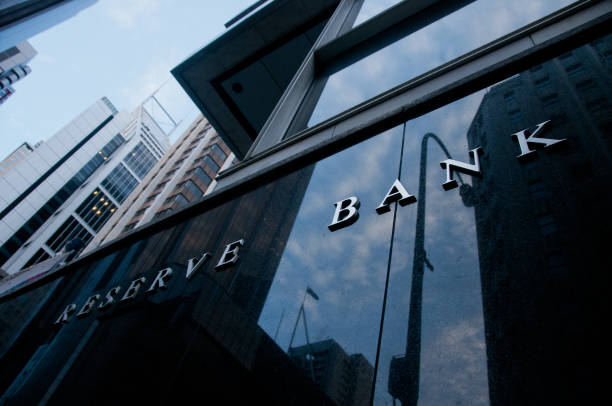Monetary policy refers to any course of action and procedures a nation’s central bank takes to control the money supply while preventing inflation and ensuring low unemployment rates. Monetary policy also includes controlling interest rates. The Federal Reserve Bank acts as the central bank in the United States.

In a nutshell, the monetary policy seeks to maintain price stability in an economy.
Aims of monetary policy
The aim of monetary policy, as seen above, is mainly threefold:
- Control money supply
- Prevent or reduce inflation (rates)
- Ensure unemployment levels are low
Controlling money supply
Money supply refers to the total volume of money, in all its forms, available in the economy (in circulation) at a particular time. The Fed prints paper currency at will and as per the requirements. Increasing its production could increase the money supply, but this is not how the Fed operates.

The following are some of the monetary policy strategies that can be used to influence the money supply:
- Reducing bank reserve requirements means more people can borrow and more money is in circulation. Increasing these requirements means that there will be less money supply.
- Lowering discount rates automatically spurs economic growth and vice versa.
Preventing or reducing inflation
A dollar can buy fewer items now than it would have ten years ago. The dollar has not lost its value, just that the general prices of products and services have increased over time. This is inflation. More aptly put, inflation occurs when prices increase steadily. Metrics used to measure inflation include the inflation rate and Consumer Price Index (CPI).
Picture a balloon. Its original size is small, but when inflated with air, it suddenly expands and becomes large. Inflation is when the economy is blown out of proportion due to shifts in prices and purchasing powers, vagaries of nature and other factors.
Mostly, inflation means that there is too much money in circulation in the economy. The central bank’s task could just reduce the money supply and decrease inflation, right? But it is not as simple as it seems. If monetary policy only dealt with cash, as in notes and coins, doing this would be easy. However, bank deposits and other monetary forms make it more difficult to develop a feasible monetary policy across the board.
A more direct approach to control inflation would be to control interest rates. Setting how much one loses from borrowing from a bank and how much one earns from saving in a bank may directly influence inflation. For instance, if the Fed raised interest rates, more people would save in banks, meaning the economy would have a lower money supply. If they were to reduce interest rates, more people would borrow, increasing the money supply in the economy.

Therefore, increasing interest rates reduces inflation, while increasing interest rates would increase inflation. Central Banks may use diverse methods to determine the best interest rate to impose, such as the Taylor Rule or a discretionary monetary policy.
Reducing unemployment rates
When the economy faces a negative shock, unemployment rates will increase. Most central banks focus primarily on controlling inflation, consequently ensuring more people are employed. However, in the United States, the Fed has a dual mandate that requires controlling inflation and reducing unemployment to be considered equal. The Fed sets the unemployment level between 3.5% and 4.5%.
The solution to unemployment can also be considered to be dual. The government could either focus on demand or supply. When aggregate demand decreases, unemployment increases because there is less output, so that manpower will be less required.
Increasing aggregate demand by reducing interest rates will have the following effects:
- People can borrow more money and set up businesses, therefore creating employment opportunities.
- Lower interest rates mean lower exchange rates. Exports become more competitive and help in creating jobs.
The government could also chip in by giving incentives to employers or approving businesses quicker and more transparently. Ultimately, the Fed’s role is to ensure unemployment rates are at an all-time low, so they will employ all kinds of operational monetary policies to ensure this.
Types of Monetary Policy
There are two main types of monetary policy: expansionary and contractionary, concerning the money supply. This means that while the expansionary model will seek to increase the money supply, the contractionary strategy will reduce the money supply.

Expansionary Monetary Policy
Individuals can start and grow their businesses when the money supply is increased, thereby increasing employment opportunities. Banks have more to lend because of increased liquidity. The price of money reduces, and borrowing becomes cheaper in this model.
Contractionary Monetary Policy
The economy grows slower when the money supply is reduced through diverse ways, such as higher interest rates. The contractionary method is used to reduce inflation. If too much attention is placed on this monetary policy, there could be an economic recession or hyperinflation.
Strategies for Monetary Policy

Open-Market Operations (OMO): In this strategy, the Fed buys or sells bonds to investors to influence the amount of money in the economy.
Discount rate: This is the interest rate the country’s central bank charges to banks. The Central Bank prefers banks to borrow from other banks in an interdependent system kind of way. By increasing the discount rate, the economy is slowed a bit because borrowing is reduced.
Reserve requirements: The central monetary authority can reduce bank reserve requirements to increase the capital that can be borrowed to set up businesses.
Monetary vs Fiscal Policy
Monetary policy is not the only way the government can control the money supply and circulation in the economy. Fiscal policy is when the government directs its spending and taxation to the economy. Governments mostly use fiscal policy during economic crises to help individuals and corporations recover after such downturns.
Monetary and fiscal policies are interdependent. Monetary policies aim to keep inflation in check. Fiscal policies can help do this. Government spending can be used to improve the economy and thus reduce inflation. In more ways than one, the fiscal policy comes to the rescue; in others, monetary policy saves the day.




